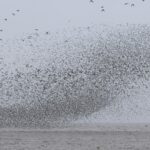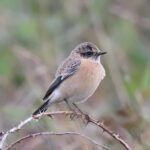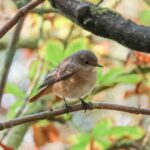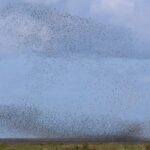A Wader Spectacular today, up on the Wash watching the whirling flocks of birds. It was a lovely bright sunny start to the day, if a little chilly first thing! It did cloud over a little but there were still some bright intervals in the afternoon.
It was an early start, which saw us heading up to Snettisham to get there well ahead of the rising tide, so we could watch the waders gathering. As we made our way down towards the seawall we could already see some huge flocks of birds swirling high in the sky – something had obviously spooked them.
When we got up onto the seawall, so we could see out across the Wash, there was still a huge flock of Golden Plover twisting and turning out over the mud. They looked stunning as they caught the morning sun, alternating golden brown and bright white. After a few minutes, they disappeared off inland, presumably heading off to roost in the fields. The Oystercatchers had all landed back down on the mud, but we couldn’t see many Knot out here. At first, we weren’t sure where they had gone.
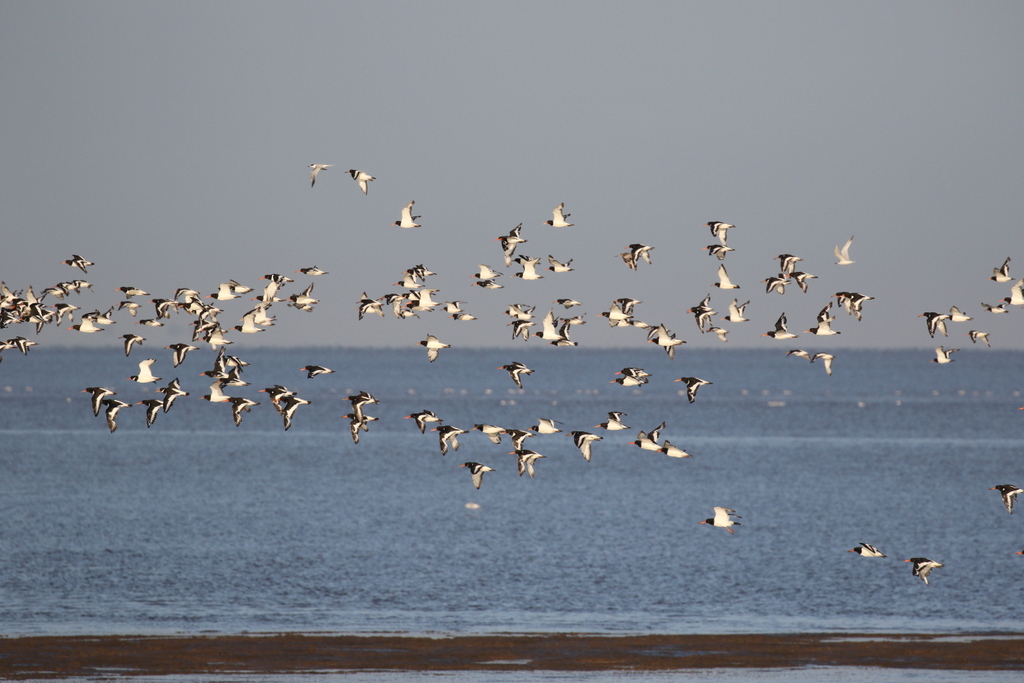
More Oystercatchers flew in from further up the Wash across in front of us, and again the morning light meant they positively shone. They flew out and joined the throng massed on the mud. There were lots of Ringed Plover down on the mud just in front of us and we had a good look at a single Bar-tailed Godwit down there too. Further out, on the other side of the channel, four Spoonbills marched across the mud ahead of the rising water.
A large group of Dunlin flew in and zoomed nervously backwards and forwards over the channel in front of us, before settling on the mud further out. More Knot started to appear too, in several flocks of various sizes, but they flew in over us and seemed to be heading in to the pits to roost already. Normally they are just about the last to leave the mud!
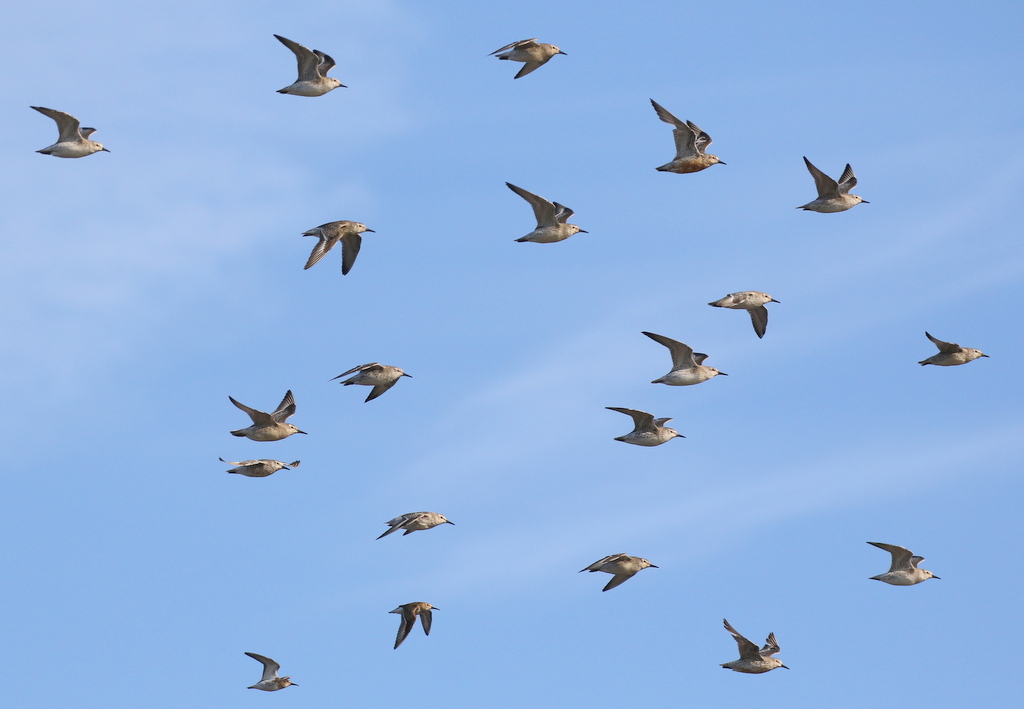
The tide was rising fast now. A couple of bright silvery-grey and white Sanderling and a Turnstone joined the other small waders down at the front but flew off with the Ringed Plover as the water started to come in. A lone Avocet was about the last to leave the mud there, waiting until the water was almost up to its belly before taking off.
The huge flock of Oystercatchers was on the edge of the water now. They didn’t seem to be too concerned and on closer inspection we could see why – they were walking up the mud ahead of the tide, like a vast flowing liquid. We made our way further up too. As we walked past the pits, we peaked over the bank and could see that there were already lots of Knot on the islands there. They had obviously flown in to roost already, even before we got there.
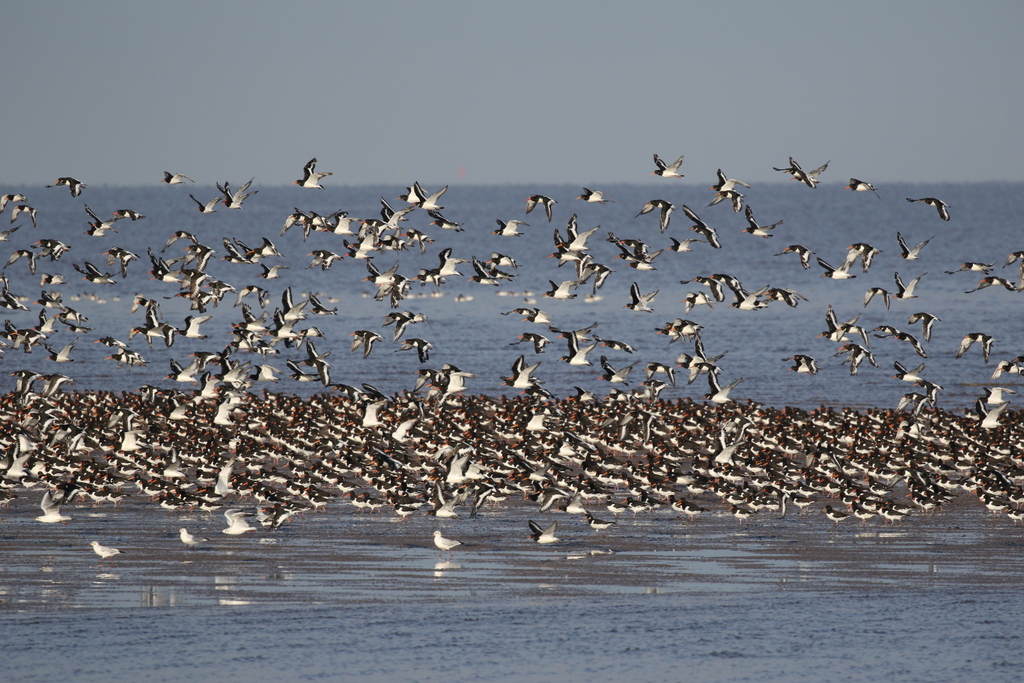
Some of the Oystercatchers then started to give up and head for the pits, peeling off in waves. We stationed ourselves at a suitable spot on the path where they were coming in right over our heads. Amazing to watch!
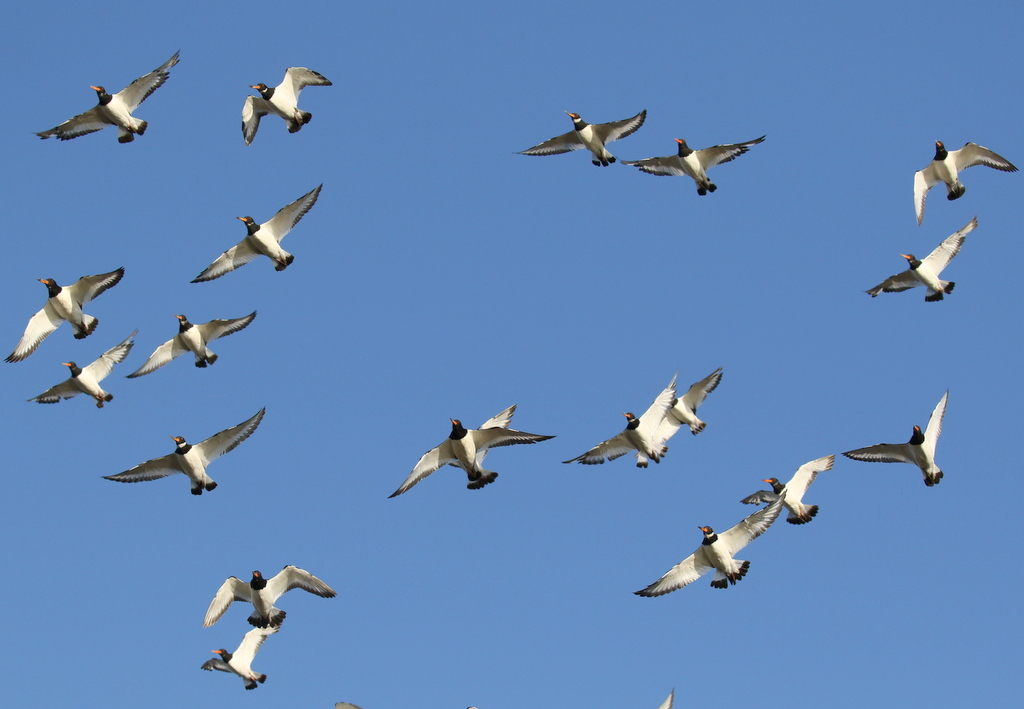
More birds were flying in all the time, from further around the Wash. The remaining Oystercatchers were getting ever more concentrated into the last corner of the remaining exposed mud. Beyond them, we could see lots of Sanderling and Dunlin, Bar-tailed Godwits, Curlew and Grey Plover, as well as still quite a few Knot.

More of the waders started to throw in the towel and head off to roost, realising it was futile to resist the tide rising ever higher. The Sanderling headed off back up the Wash to roost somewhere else and the Curlew and Bar-tailed Godwits stood their ground, but we stood and watched as the others headed in past us in waves, landing behind on the pits.
A Marsh Harrier quartering the saltmarsh just beyond managed to get most of the remaining birds in the air. Even the Curlews took off but landed again in the vegetation further back.
Once the majority of the birds had left the Wash, we headed off to have a look at the Pits. As we walked along the boardwalk, a couple of Spoonbills flew in and dropped down onto the pits. It was unbelievably busy at Snettisham today, and when we got to the temporary screen/hide at the south end, we found we couldn’t get in, so we decided to continue on round and scan from the far side.
The light was much better on the east side. We stopped on the boardwalk where we could see across onto part of the pit. The far bank was coated in Oystercatchers, shifting nervously. Below them, on the water’s edge, we could see a few Black-tailed Godwits. A single Bar-tailed Godwit was with them, much more obviously patterned on the upperparts, giving a great side by side comparison.
There were three Spoonbills on one of the islands, doing what they like to do best – sleeping! They did wake up from time to time and show us their bills, two juveniles and a single adult, the latter with a yellow tip to its black bill. There were a couple of Pintail with the Mallards on the water nearby too.
Carrying on round on the path, we passed a few Egyptian Geese on the grass with the Greylags. From up on the inner seawall, we could see part of the islands at the northern part of the pit and they were full of waders. From a distance they looked just like stones, but on closer inspection one was covered in tightly packed Knot. Another held a more varied mix – Turnstones on the edge, Knot mixed with godwits just behind and Dunlin scattered more widely at the back.
There were still a few Common Terns on one of the islands – adults in various stages of moult to non-breeding plumage and several brown-backed juveniles. A Little Grebe was diving on the water in front.
The crowds in the hides seemed to be thinning out a bit, but the benches in the south screen were still largely taken up with a rank of large-lens touting photographers in residence. There was room for us to stand behind them now at least though!
The islands at this end were filled mainly with Oystercatchers and Black-tailed Godwits, but there were some small groups of Common Redshank around the margins and three Greenshank with them down at the front. A moulting juvenile Spotted Redshank asleep nearby looked very like the Common Redshanks until it woke up and flashed its longer, needle-fine bill.
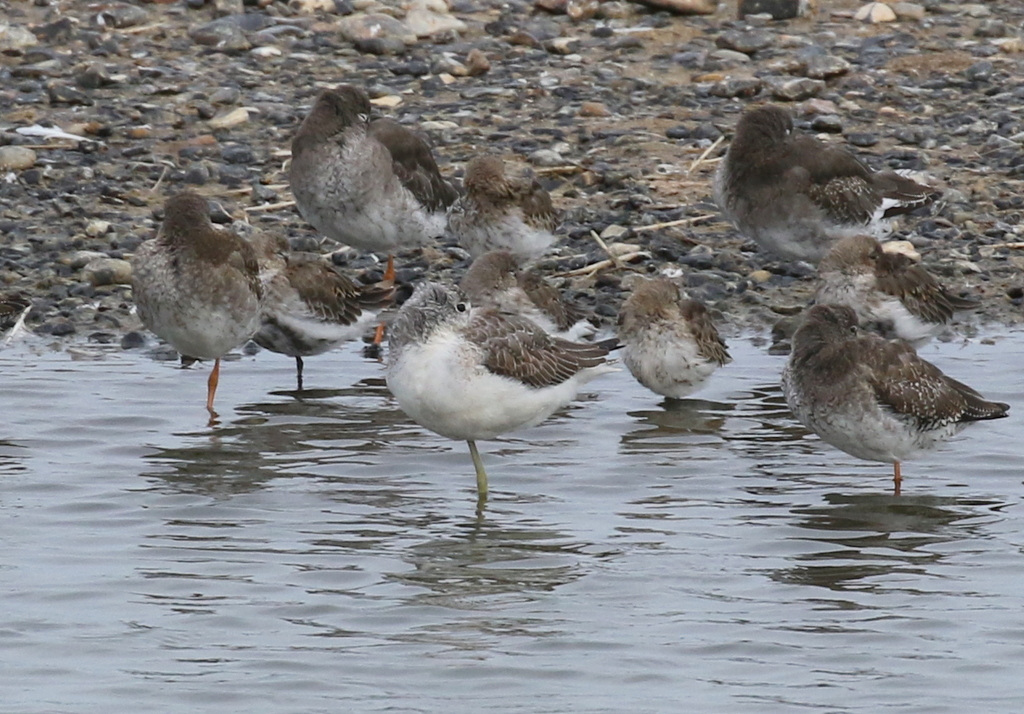
There were a few Dunlin and Knot down at this end too, but most of the smaller waders were on the islands at the other end of the pit, so we made our way round to Shore Hide next for a closer look.
The island right in front of Shore Hide was packed with birds. They were mostly Black-tailed Godwits but hiding in amongst them were lots of Knot. Most of them are in their grey non-breeding plumage now, but several were still wearing the remains of their orange summer underparts. The next island over seemed to be wall-to-wall Knot!

There were more Spotted Redshanks out in the middle here, roosting with Black-tailed Godwits in amongst the rocks where the Cormorants were loafing. There were a few Common Redshanks too and we possibly couldn’t see all of them, but we counted at least 11 Spotted Redshanks here, mostly adults in non-breeding plumage now.
We hadn’t been in the hide long before the Knot started to shuffle nervously. It was already an hour or so after high tide, and the sea would be receding now. A few took off from the edge of one of the islands and as they flew round over the pit, more and more Knot took off to join them before they started to head off over the bank.
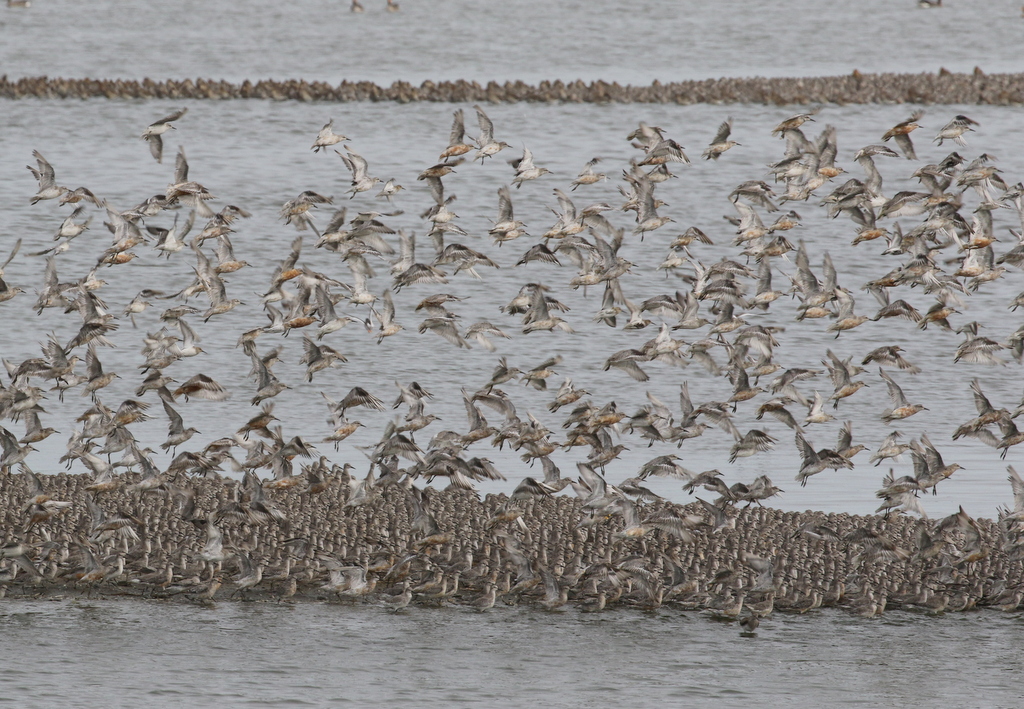
We decided to go outside, back to the edge of the Wash. Perfect timing, as we got out to find a huge swirling flock of Knot out over the mud. They twisted and turned, making various shapes in the sky, breaking into separate flocks before flying back across each other and then coalescing again. Finally – a proper spectacular display from the Knot!

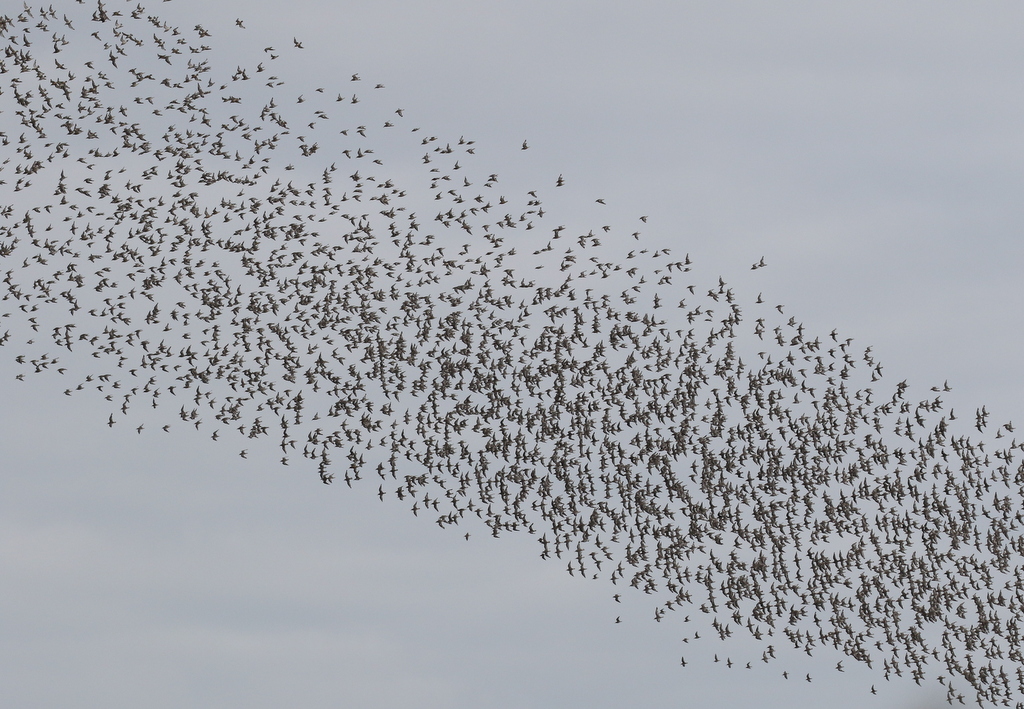
The Knot were clearly still unsure at first as to whether to head back out onto the Wash or not. The flock turned and came back in, over our heads. The sky above us was filled with thousands of birds and all we could hear was the beating of thousands of wings. Breathtaking!

They circled over the pits again for a minute or two before deciding they didn’t like the look of those either, then headed back out over the Wash and disappeared away into the distance. We stood on the edge of the Wash for a while. The Oystercatchers started to filter back out from the pits in lines, before landing in big groups back out on the newly exposed mud.
Eventually, it looked like that might be the end of it for today, so we started to walk back along the path. As we did so, we scanned the mud. A Spoonbill appeared and began to feed in the small pools, sweeping its bill from side to side as it walked round in the water, head down. An adult Mediterranean Gull flew past, flashing its all-white wings and a Sandwich Tern flew in and landed on the edge of the water.

Looking over the bank, we could see there were still quite a few Knot packed tight on one of the islands on the pit. They didn’t seem like they were too inclined to move, but as we walked further on something spooked all the birds behind us and another wave of Knot flew over the bank and out low across the Wash. They swirled around for a couple of minutes – giving us one last display – before settling down on the mud.

It had been a great morning at Snettisham, and we headed off to Titchwell next. It was midday when we arrived there, and after our early start it was time for lunch! After lunch, we headed out to explore the reserve – we didn’t have as long as usual here today, but we would see what we could find.
The reedbed pool was quiet, save for three Coot and a single Little Grebe. We could hear Bearded Tits calling, but they were well out in the reeds and there was a fresher breeze now, so they were keeping tucked down. We continued on to Island Hide.
There were plenty of Ruff on the mud in front of the hide. They can be the most confusing wader to identify and we looked at two which were very close – a winter adult male and a much smaller juvenile female. They almost looked like two different species!
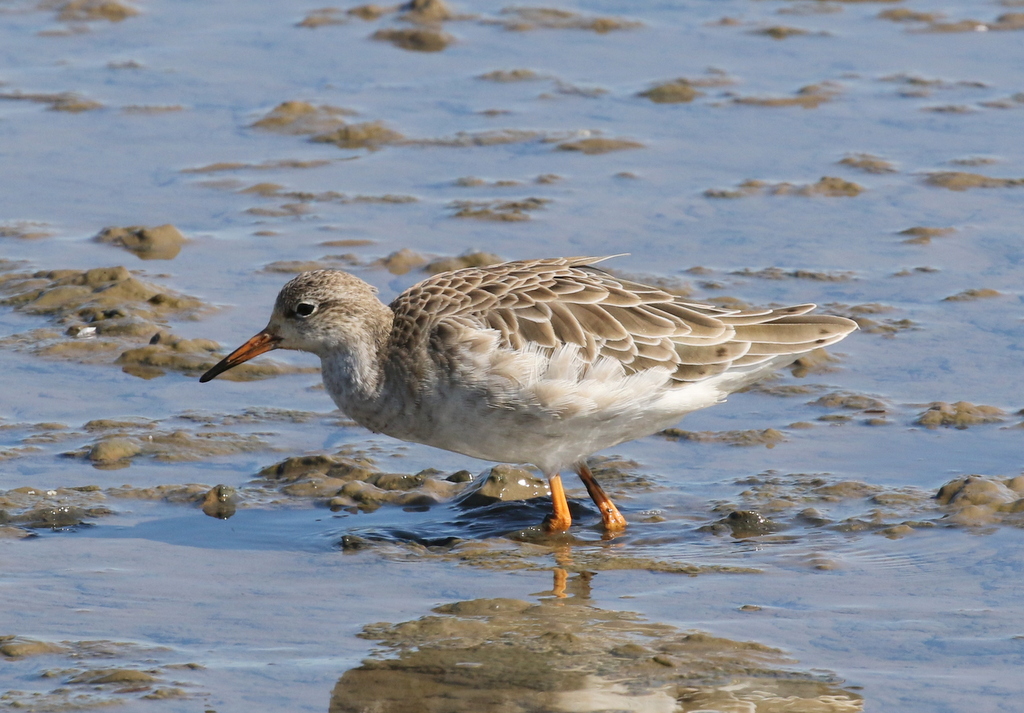
There was a nice selection of other waders. A huddle of Black-tailed Godwits around the islands. A flock of Golden Plover on one of the strips of mud, with a few black-bellied birds still sporting the remnants of their breeding plumage. A couple of Dunlin on the mud in front of the reeds, juvenile birds with spotted bellies. Two Ringed Plover were running around the edge of one of the islands.
Numbers have dropped substantially from late summer, when the local population was boosted by birds coming to moult, but there are still quite a few Avocet here. One was feeding quite close to the hide, sweeping its bill quickly from side to side in the shallow water. It was quite brown-backed, a juvenile.
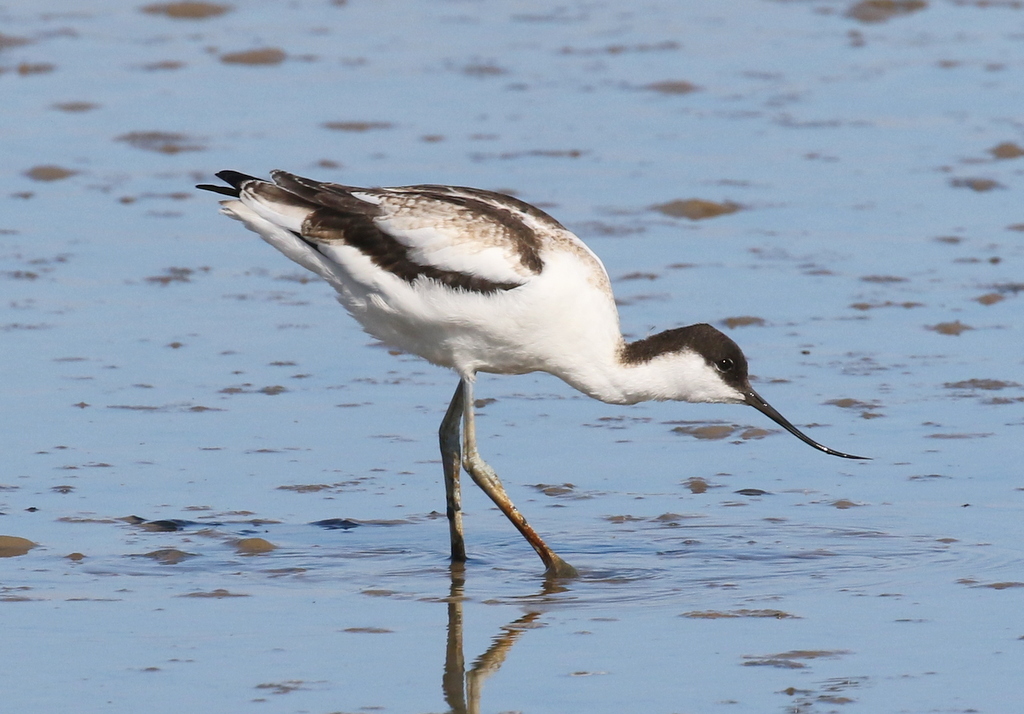
We could hear Bearded Tits calling at one point, but despite scanning back and forth along the edge of the reeds periodically, we couldn’t find any here today.
The two Pink-footed Geese with mangled wings, which have been here all summer, were on one of the islands, over towards Parrinder Hide. There were plenty of ducks too – Teal, Gadwall and Shoveler mainly – all in their rather drab eclipse plumage. Several Shelduck were all juveniles, with the bulk of the adults having gone off to the continent to moult.
Continuing on along the main path, we scanned the margins and the edges of the islands hoping for a Common Snipe, but we couldn’t find one today. There were plenty of Linnets in the vegetation on the islands, and a few Pied Wagtails around the muddy edges.
Volunteer Marsh was fairly quiet, apart from a Curlew and a Redshank, until we got to the channel at the far end. A Black-tailed Godwit was probing its long bill in the mud just below the path and a Little Egret was fishing in the narrows. Scanning the muddy banks either side of the channel on the north side, there were lots more Black-tailed Godwits and Common Redshank, and a single Grey Plover.
After the recent big tides, the now non-tidal ‘Tidal Pools’ have filled up again. As a consequence, there was nothing on here today – very few of the islands are now visible above the water. So we continued on to the beach.
With the tide out now, there were lots of waders on the mussel beds at the bottom of the beach. We could see good numbers of Curlew, Oystercatcher, Black-tailed and Bar-tailed Godwits, plus Turnstones and Knot. However, we were hoping we might find a Whimbrel but there was no sign of one. The sea was pretty quiet too. There had been a Red-necked Grebe offshore earlier, before the tide went out, but all we could find now was a couple of Great Crested Grebes.
On our way back, we called in at Parrinder Hide. At first it looked like there was nothing different to see from here. Several Linnets, Pied Wagtails and Meadow Pipits were feeding in the tall vegetation on the islands. We were hoping at least to find a Common Snipe here, but just after we had announced we couldn’t find one, a Common Snipe walked out onto the edge of the island to the left of the hide. Typical!
A wader dropped in onto the spit at the end of Avocet Island and through the scope we could see it was a Common Sandpiper. It stopped to bathe and then walked up onto the shore to preen, before running off round the back. Just a few seconds later, another Common Sandpiper appeared on the mud just to the left of the hide. We could tell it was a different bird to the one we had just seen, as this second one had a gammy leg and a noticeable limp.
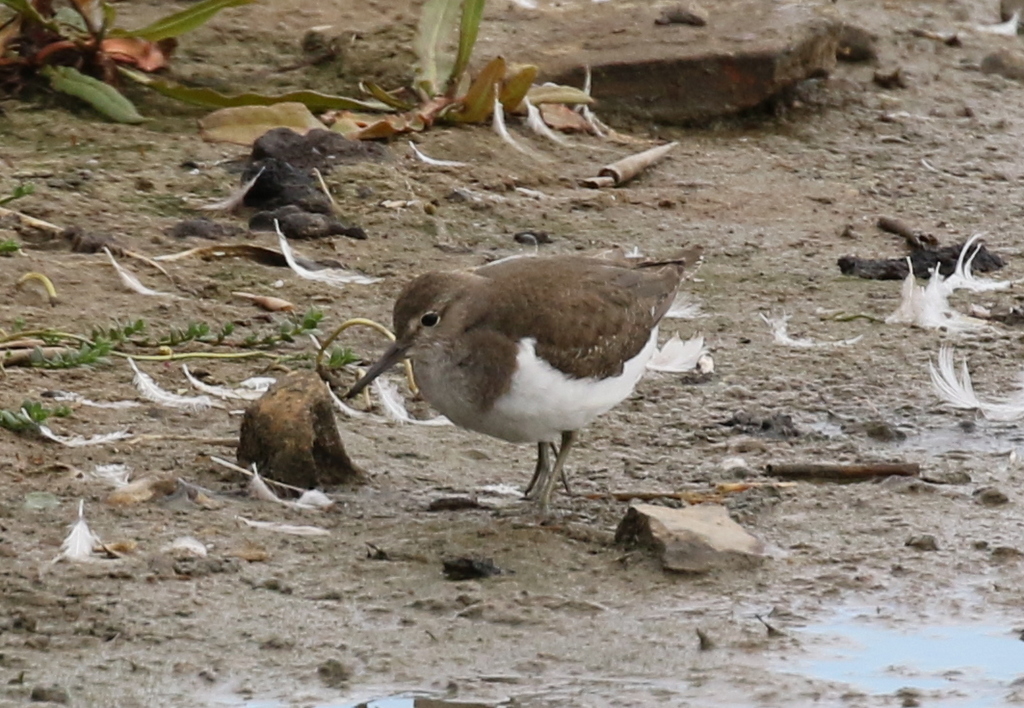
As we scanned the edge of the reeds over the far side of the Freshmarsh, all we found at first were more Common Snipe. Suddenly they seemed to be everywhere! Then we spotted a Bearded Tit working its way low along the reed edge on the back of the mud. It was distant, but we could see it was a smart male, with a powder blue head and black moustache. A couple of minutes later we found two juveniles a little further over, feeding on the open mud. Then a Water Rail appeared nearby too, coming out of the reeds for a quick bathe before walking in and out of the vegetation along the back edge.
It had been well worth the diversion into Parrinder Hide. As we walked back towards the visitor centre we finally got our Whimbrel. We heard one calling, and looked across the saltmarsh towards the beach to see two Whimbrel flying past in the distance.
We thought that was it. It had been a quick visit to Titchwell this afternoon, but we were due back. We were packed up, in the car and driving out of the car park when we saw several people looking intently up into the trees. We opened the window and asked what they had seen and the reply came ‘Turtle Dove‘.
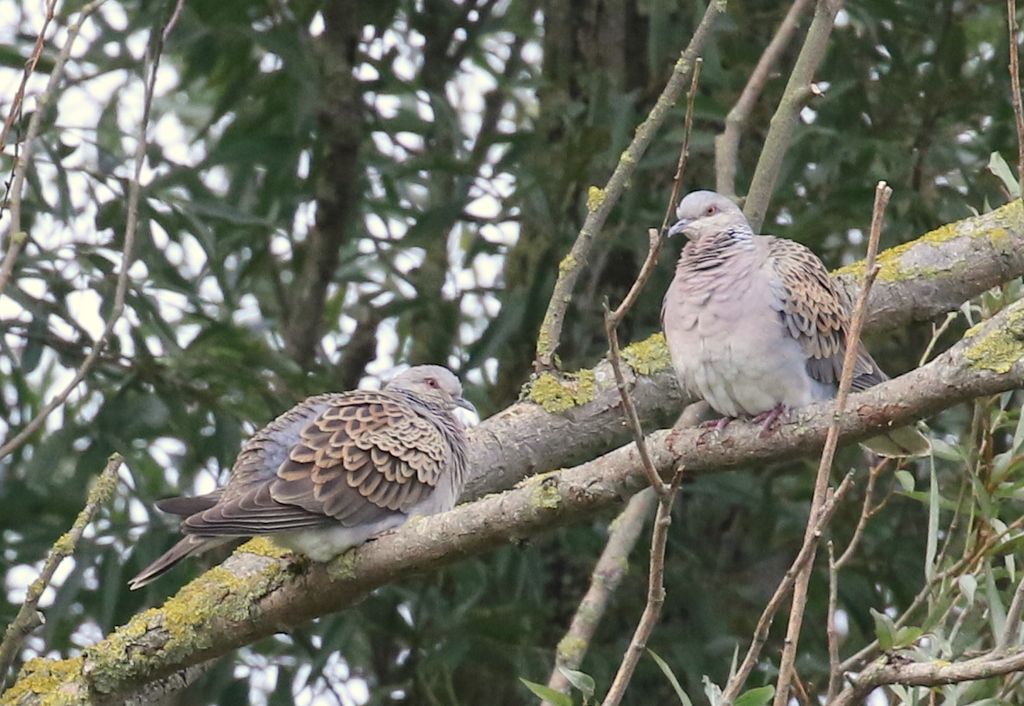
Everyone disembarked again and we had a great view of the two Turtle Doves perched in the trees at the back of the car park, preening and dozing in the afternoon sun. It was a perfect way to end the day.
